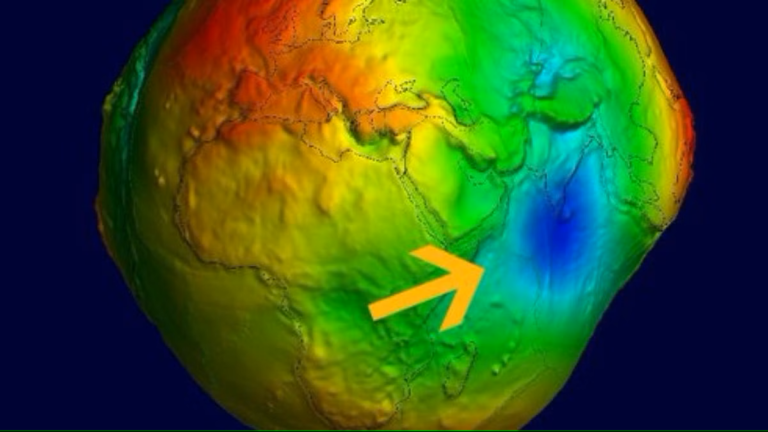Decoding the Enigma: Unraveling the Source of a Massive ‘Gravity Hole’ in the Indian Ocean
The Mystery of the Giant ‘Gravity Hole’ in the Indian Ocean
Within the geoid, an assortment of captivating irregularities awaits exploration, including a remarkable expanse referred to as the ‘gravity hole’ located in the Indian Ocean. This expansive region manifests a significantly diminished gravitational pull compared to the global average, perplexing scientists for numerous decades.
Nevertheless, recent investigations have provided valuable insights into the genesis of this captivating geological phenomenon.
The Gravity Hole: A Unique Anomaly
Geophysicists employ the term ‘gravity hole’ to describe a localized area where the influence of Earth’s gravity is substantially diminished compared to the norm. Within the Indian Ocean, this peculiar gravity anomaly materializes as an extensive depression in the Earth’s crust. In this particular region, the sea level experiences an astounding drop of 100 meters below the global average due to the pronounced dip in gravitational forces. This extraordinary phenomenon, officially known as the Indian Ocean geoid low (IOGL), has captivated the scientific community since its initial detection in 1948.
Theories and Discoveries
Over the years, numerous theories have emerged in an attempt to elucidate the enigmatic gravity anomaly observed in the Indian Ocean. However, verifying these hypotheses has proven challenging due to the intricate nature of Earth’s geological history. Recently, a groundbreaking study published in Geophysical Research Letters has shed new light on this captivating mystery.
According to the study, the gravity anomaly is primarily attributed to the ascent of magma plumes originating from the depths beneath Africa, specifically at the peripheries of the sinking remnants of a bygone ocean floor. These columns of molten rock, believed to be remnants of the ancient Tethys Ocean, have been rising from the Earth’s mantle for millions of years. The interaction between this ancient oceanic material and the surrounding hot molten rock is postulated to be the driving force behind the creation of the geoid low—a distinct depression in the gravity field.
Implications and Future Research
The unearthing of the gravity anomaly within the Indian Ocean, along with the accompanying theories concerning its origin, offers a captivating glimpse into the ancient and occasionally perplexing geological evolution of our planet. Comprehending these anomalies holds paramount importance for our understanding of Earth’s gravitational field, with far-reaching implications ranging from satellite navigation to climate modeling.
Nonetheless, the debate surrounding the genesis of the geoid low remains unresolved. Further data collection and research efforts are indispensable to furnish more substantial evidence and achieve a profound comprehension of this phenomenon. As our comprehension of these gravitational anomalies continues to advance, they will undoubtedly furnish invaluable insights into the intricate and dynamic nature of our planet.
The revelation of the gravity anomaly in the Indian Ocean stands as a testament to the remarkable power of scientific inquiry and the ceaseless enigmas that our planet conceals. As we persist in exploring these enigmas, our understanding of Earth deepens, affording us an enhanced awareness of our position within the vast cosmic tapestry.
Source: Research paper
Do not forget to share your opinion with us to provide you with the best posts !




0 Comments